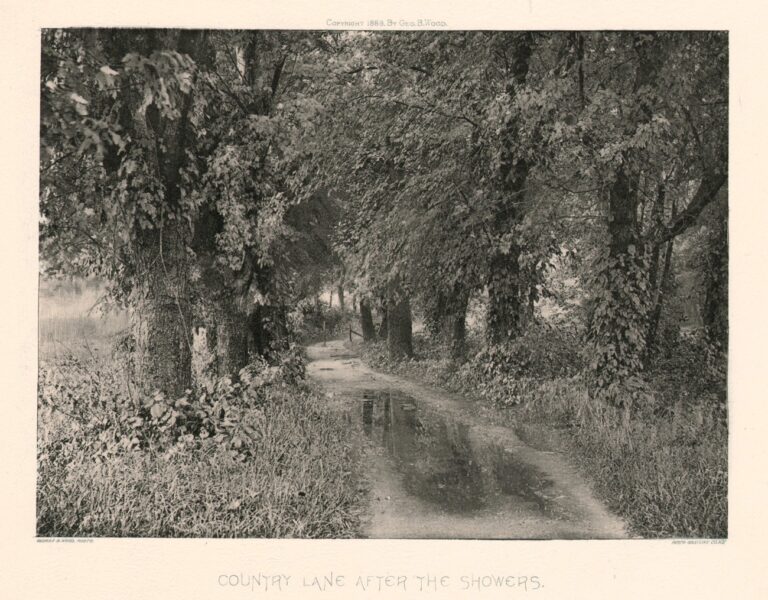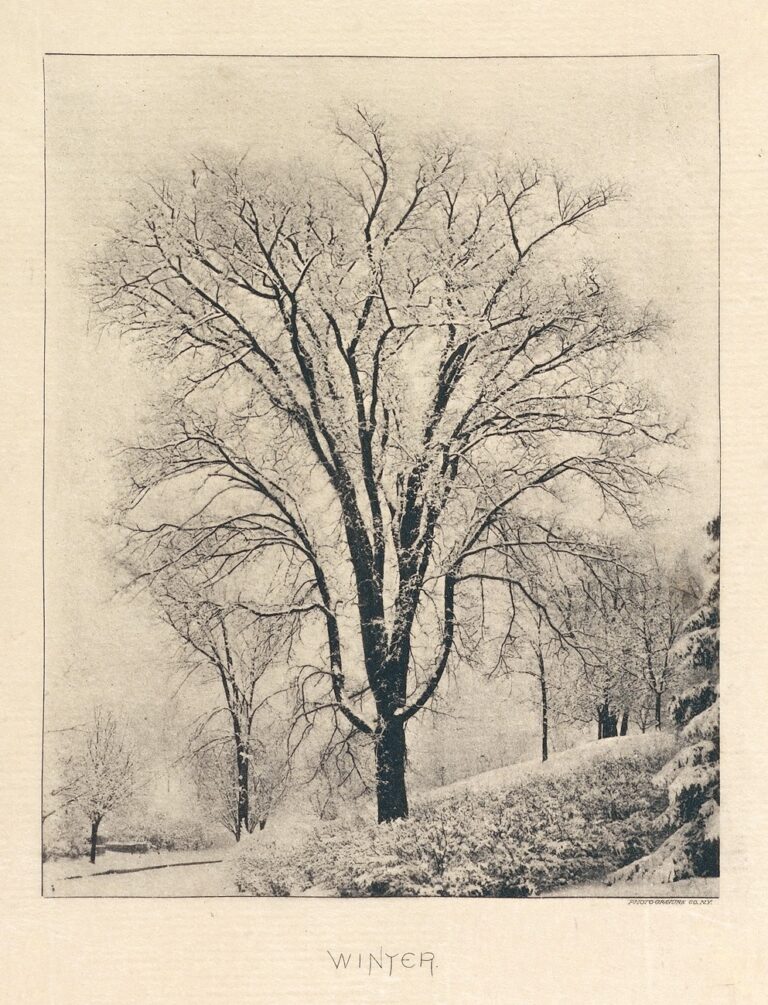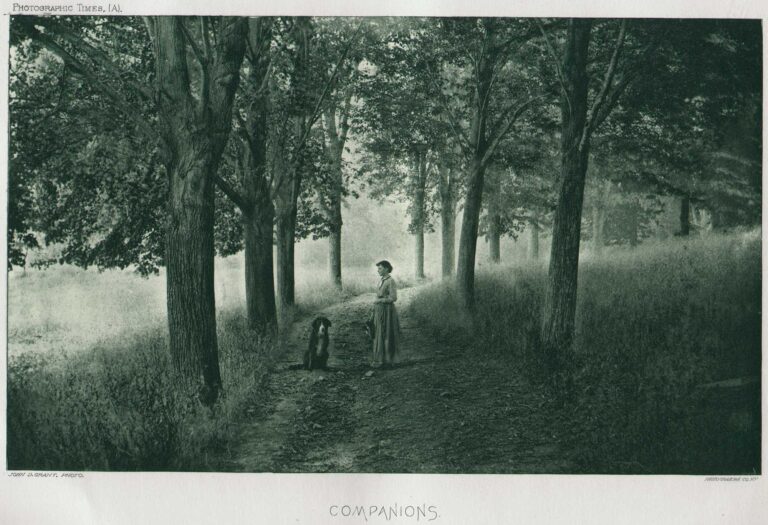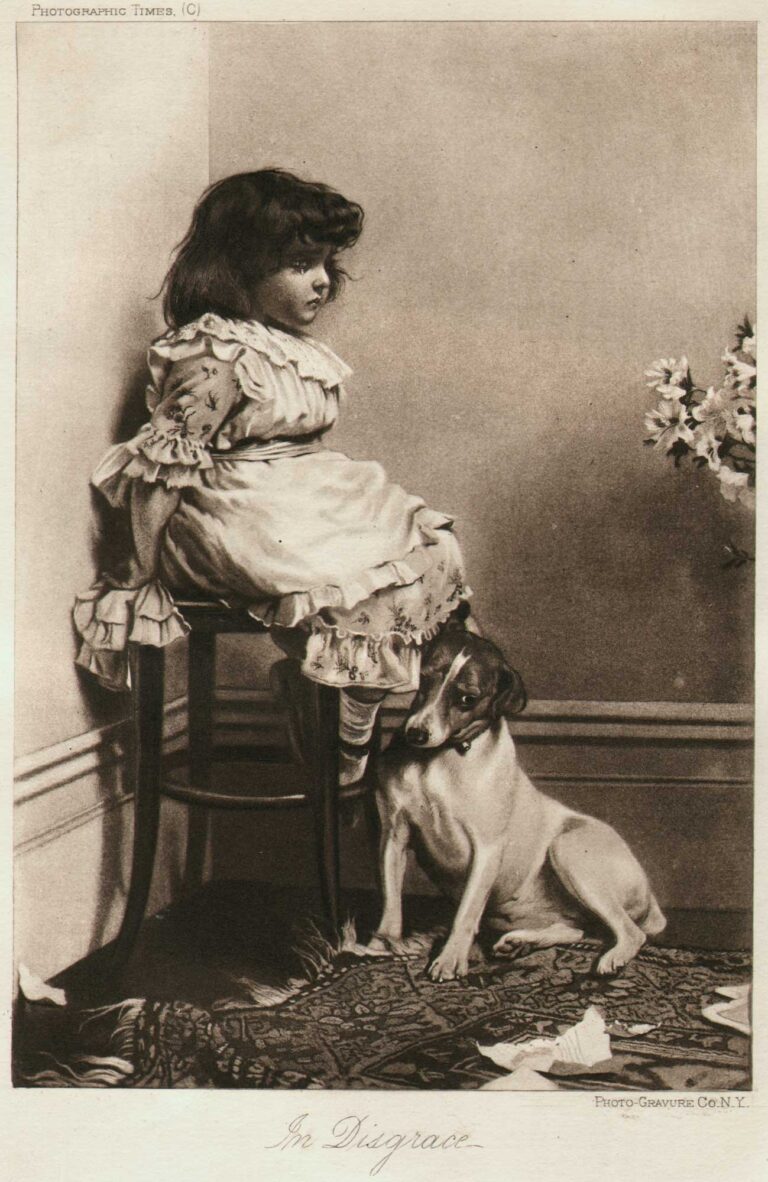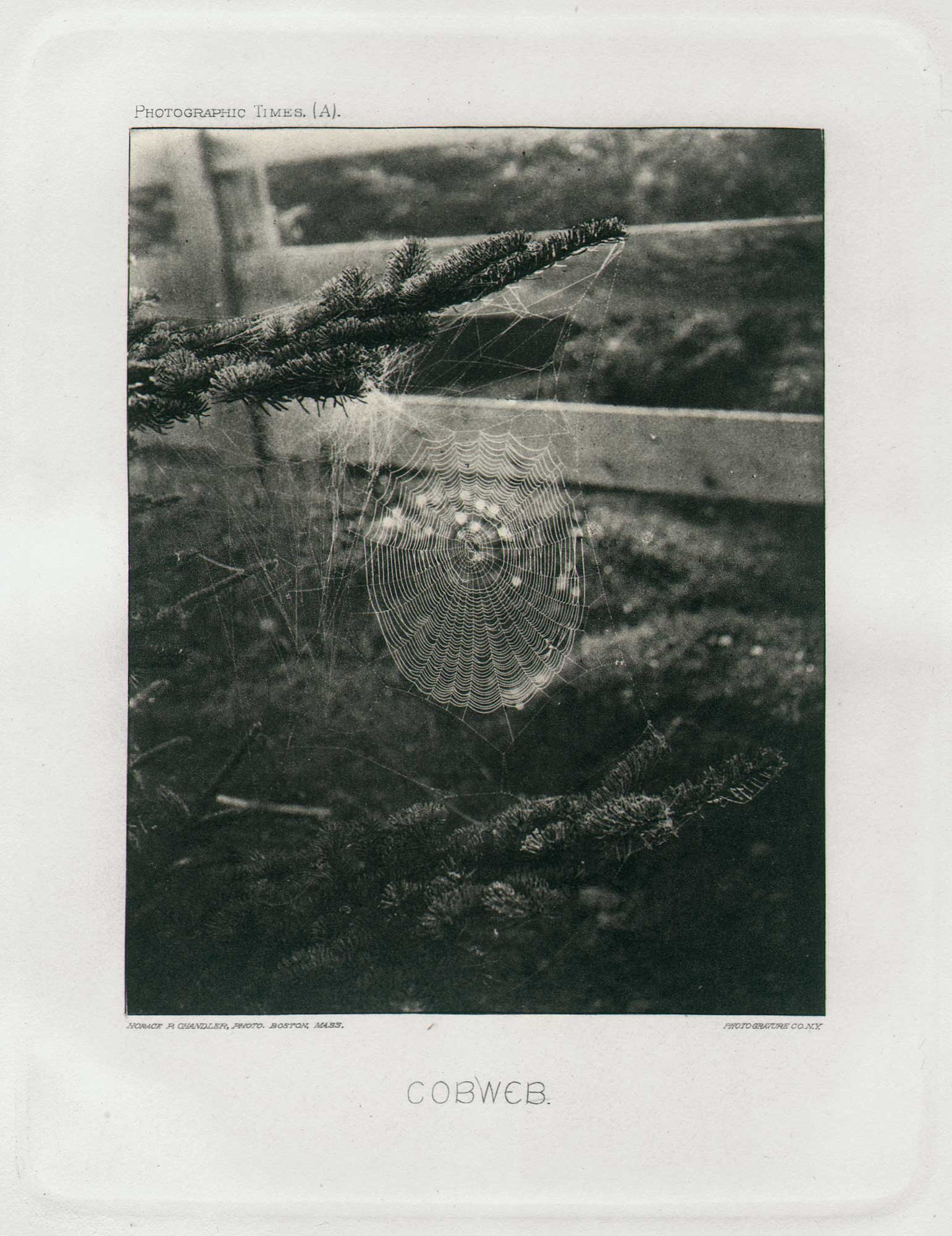
Cobweb
Horace Parker Chandler: 1842-1919
Biography– excerpt: Jamaica Plain Historical Society:
Descendant of Plymouth Colony settlers, publisher of poetry and law books, Boston real estate and mortgage broker, journalist, friend and advocate of all seamen, photographer, newspaper and magazine correspondent, graduate of Boston Latin School and Harvard University, and 50-year resident of Jamaica Plain. The English name Chandler means “candle-maker.”
Editorial Comment for this plate:
A SPIDER’S WEB.
WE are indebted to Mr. Horace P. Chandler, of Boston, for the extremely beautiful picture of a spider’s web, which embellishes our pages this week. The photo-gravure was made direct from the negative without enlargement or reduction, or any change whatever. It is a beautiful reproduction of an exceedingly rare negative. Only the most conducive circumstances could make such a photograph possible. As the Rev. Henry C. McCook, that fascinating writer on spiders and kindred subjects, truly says in the interesting remarks which follow; the photograph was made early one morning while the dew was still wet on grass and foliage, and the early mist of the dawn obscured a too bright sunlight for such delicate photographic work. Mr. Chandler has made many remarkable cobweb pictures, but none that approach this in beauty or interest.
The photo-gravure preserves all the delicate detail of the original negative, and the peculiar charms of the picture. Such a photographic reproduction, perfect of its kind, is an inspiration in itself. But let us read what Doctor McCook has kindly written for our readers concerning this particular cobweb and its builder:
“The photo-gravure is an excellent reproduction of a photograph of that form of spider webs most familiar to the general public. The tribe making the snare is known among naturalists as the Orbitelaria, or Orbweavers. The popular names are the ‘Garden spider’ and the Geometric spider.’ The particular species making this web was not collected by the gentleman who made the photograph, but a study of the details shows that it was constructed by one of our common nest-making Orbweavers ; that is to say, those who are in the habit of weaving a pretty, silken, dome-shaped nest or a nest of leaves, at one side of their snares.
“In these nests they remain during the day, holding fast to a ‘trapline’ which passes out of the open nest to the center of the orb. At this point it is attached by several branching threads. web is drawn, and held taut by the spider, and thus every agitation made by the captured ‘insects is communicated from any part of the orb along the taut trapline to the highly sensitive feet of the spider. When informed of the presence of prey by this species of telegraphy, she runs along her trapline to the center or hub of the orb, and thence to the point where the insect is entangled, wraps up the fly in swathing cloth, and carries it back to her den, or nest, where she feeds upon it at leisure.
“In the photo-gravure, the nest is seen at the upper left-hand corner just underneath the branches of spruce on which the snare is hung. It is a dome shaped silken tent, whose mouth opens downward. The trapline may be seen passing out of it to the center of the snare as above described. The upper lines of the orb are partly anchored to the lower margin of this tent, and as for the ‘rest, are hung to the various outgoing lines which form the frame work or foundation of the snare.
“The species making this beautiful web very certainly belongs to the genus Epéra, and is probably Eperra trifolim, the Shamrock spider one of the most beautiful of our American spider fauna, and which is very common along the Atlantic coast, through the New England States and northward.
“The web, as is readily seen by examining it with a hand-glass, must have been photographed in the early morning, as the spiral concentrics appear to be covered with dew, and are all drooping from the weight of the drops. The dew drops can also be seen on the outlying foundation lines. At various points in the orb, the beaded spirals or concentrics may be observed interblended, the central parts of the strings being united as though they had been twisted. This has been caused by the viscid beads on the several lines being brought in contact with each other by the weight of the dew and the action of the wind. This appearance may be continually observed in the case of Orbwebs, and oftentimes a whole section will be thus twisted, or even torn out, marking the spot where a fly has been entangled, and from which it has been cut out and carried away by the spider.” (pp. 587-88)
